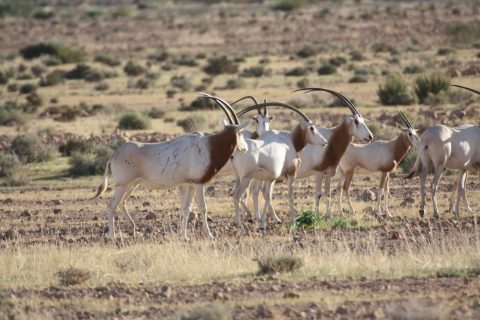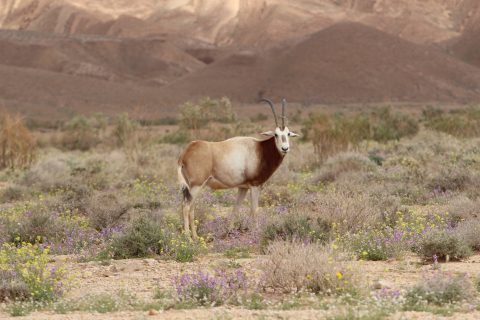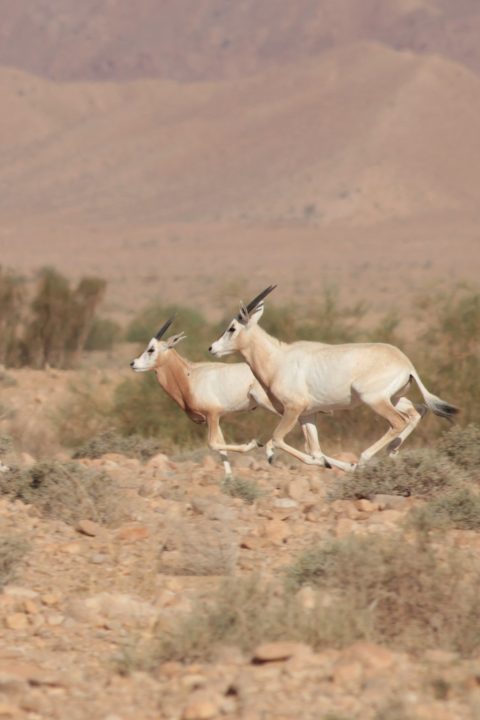Posted In Conservation | 12th December 2023
Conservation Success: Scimitar-horned oryx downlisted to ‘Endangered’ on IUCN Red List
The scimitar-horned oryx, a species of antelope once declared ‘Extinct in the Wild’, has had its status on the IUCN Red List downlisted to ‘Endangered’. The is the first species from the ‘Extinct in the Wild’ category to achieve this and it is a direct results of incredible global conservation efforts.

The scimitar-horned oryx became extinct in the wild in the early 1990s due to overhunting and habitat loss and in 2000, the species was declared ‘Extinct in the Wild’ on the IUCN Red List. This new listing of ‘Endangered’ reflects the successful reintroduction of scimitar-horned oryx from zoos into parts of their former range, and the establishment of a self-sustaining wild population which now thrives in Chad.

Since 2007, Dublin Zoo has been supporting a project run by Marwell Wildlife, in collaboration with their Tunisian partners, the Direction Generale des Forets, to reintroduce the scimitar-horned oryx back into Tunisia’s arid land. Dublin Zoo is also home to a herd of scimitar-horned oryx, which are part of the European Endangered Species Programme (EEP), and this EEP population has been used to provide animals for the reintroduction project in Tunisia.

Commenting on this news, Dr Andrew Mooney, Conservation and Research Officer at Dublin Zoo, said:
“This incredible conservation achievement is a testament to the hard work and dedication of zoos and conservation partners across the world. Working together as a global community, we have managed to recover the scimitar-horned oryx and return it to the wild. This rare moment of conservation optimism should be celebrated by all, and provide momentum for similar conservation success for other species.”
Visitors to Dublin Zoo can see and learn more about the scimitar-horned oryx in the African Plains at Dublin Zoo. If you’re interested in learning more about the conservation work Dublin Zoo does for the scimitar-horned oryx, you can here.
All images featured in this piece are courtesy of Marwell Wildlife.
